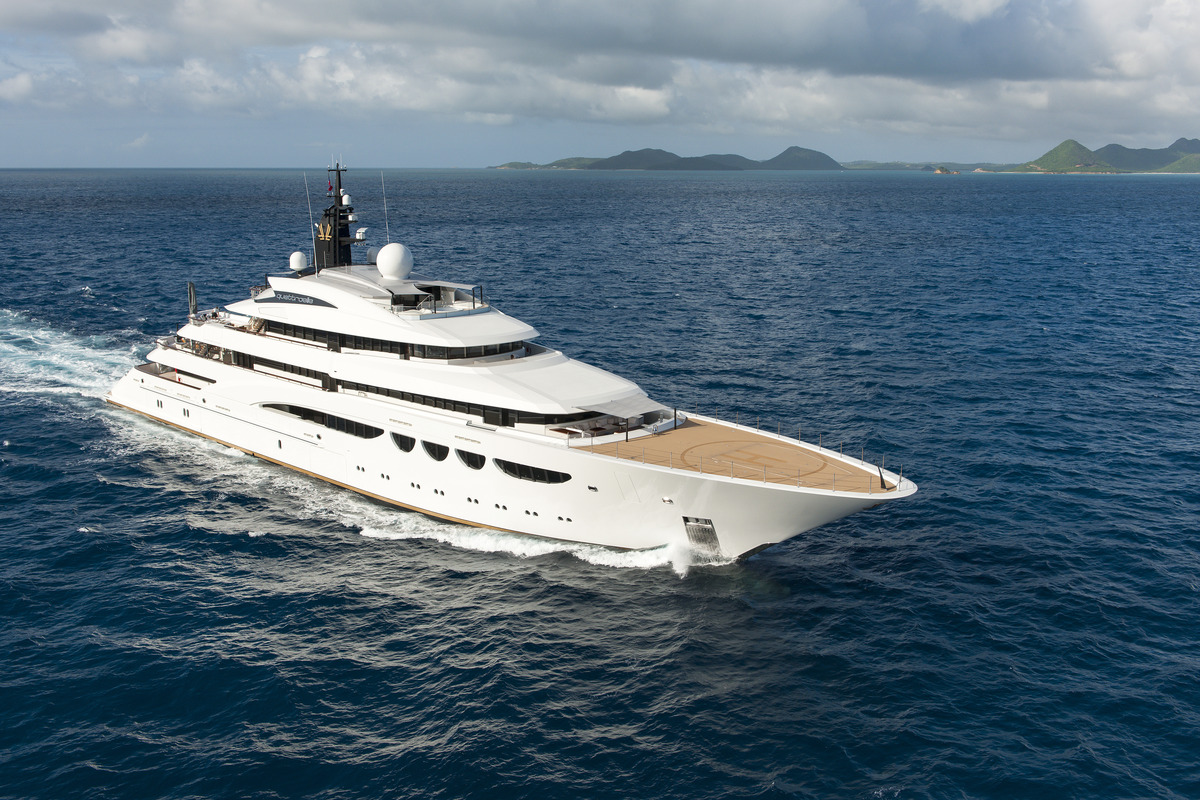
For Carlo Nuvolari and Dan Lenard, co-founders of the Nuvolari Lenard design firm, change is not only welcomed but actively pursued. It drives their design language forward, effortlessly blending form and function.
For many, the exterior of a yacht is the most visible aspect, and its sleek, sculpted lines often evoke a sense of forward motion. The Nuvolari Lenard team excels in this domain, having crafted some of the most iconic yachts in contemporary history, such as the 141.6-meter Nord, the 115-meter Ahpo, and the 60.3-meter Comfortably Numb. They continue to redefine industry standards with groundbreaking designs like the 202-meter Centerfold and the NLPlus, which encapsulates the essence of an ideal superyacht in a compact 52-meter frame.
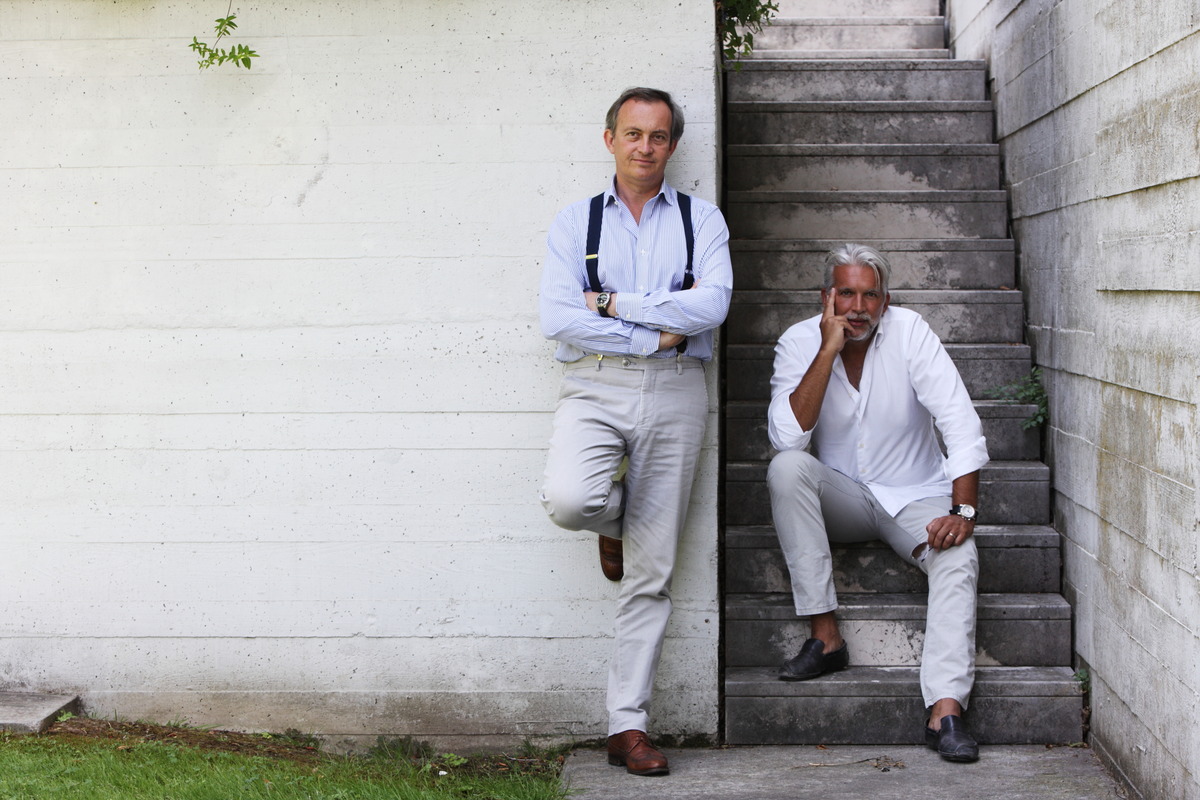
According to Lenard, the exterior is only one part of the design equation, and it is inextricably linked to the interior layout and design. Having recently taken over the art direction of the studio’s interior design department, he is reinforcing the form-function interaction while also revitalizing the essence of what an interior can be. “A yacht,” he asserts, “should be conceived as a whole. Separating external design from internal design reduces the possibility of elevating the entire yacht project to a higher level—that is, to the level of a work of art.”
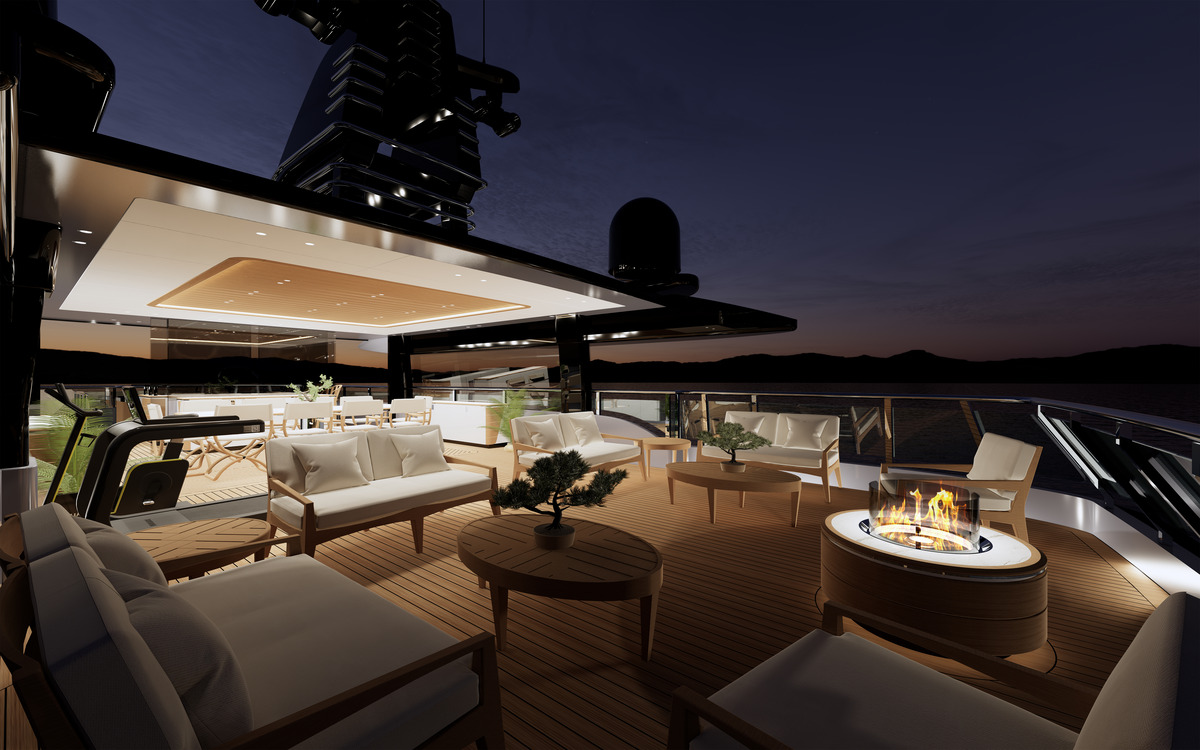
This is part of the team’s continuous effort to evolve, anticipate future trends, and refresh their design approach, especially as owners’ attitudes change regarding style and environmental concerns. “We clearly perceive the expectations of today’s shipowners who, regardless of their age, think differently and think younger,” Nuvolari states. “The COVID pandemic marked the beginning of a new era. In recent years, interior design has often seen appearance dominate substance, with an excess in the use of special (and expensive) materials.”
“We want to reverse this equation,” he continues, “with a trend that will see the exaltation of true design, less formality in environments, less emphasis in decoration, and interior design focused entirely on the individual and wellbeing.”
The Orangery: Light and Sight in Design
To achieve this fundamental shift, the Nuvolari Lenard team is concentrating on two crucial elements: a keen attention to proportion and precise layout and lighting planning. “This is where the connection with the exterior design reveals itself,” Lenard explains. “The emphasis on light influences the relationship with the yacht’s exterior, determining the shape and position of the windows.”
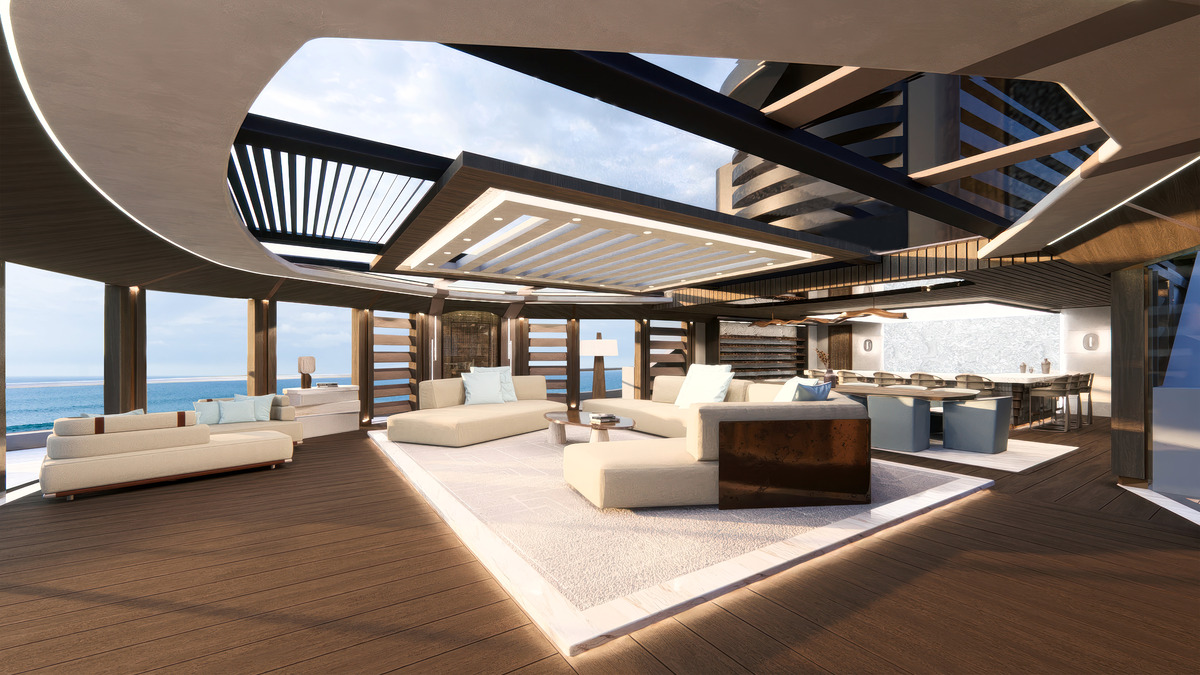
The Orangery of the Centerfold project exemplifies this progressive transition to a new trend, dominated by themes of light and sight with a clear aesthetic that avoids excess formalism or superfluous ornamentation. Massive glass expanses surrounding the room both vertically and overhead define the space. According to Lenard, it is an internal setting on the yacht that allows visitors to experience the feeling and ambiance of the sea.
Sustainable Interest in Interior Design
An additional crucial component of this reevaluation of interior design is the goal of enhancing consumer well-being and environmental sustainability. This element serves as a secondary motivator for Nuvolari Lenard’s updated interior design style.
Nuvolari has particularly focused on this, demonstrating the impact of using various materials and construction methods. He provides shipowners with extensive knowledge to elucidate these factors and assist them in making informed decisions. “We tend to condemn the use of certain materials only because we have limited—or tradition-distorted—information,” he says. “Often, we consider materials to be ‘sustainable’ that actually only have the appearance of being sustainable.”
Nuvolari cites natural leather as an example. “We frequently bemoan its usage, favoring synthetic leathers,” he claims, “but we overlook the fact that natural leather is a byproduct of the food industry. If discarded, it would have a detrimental effect on the environment.”
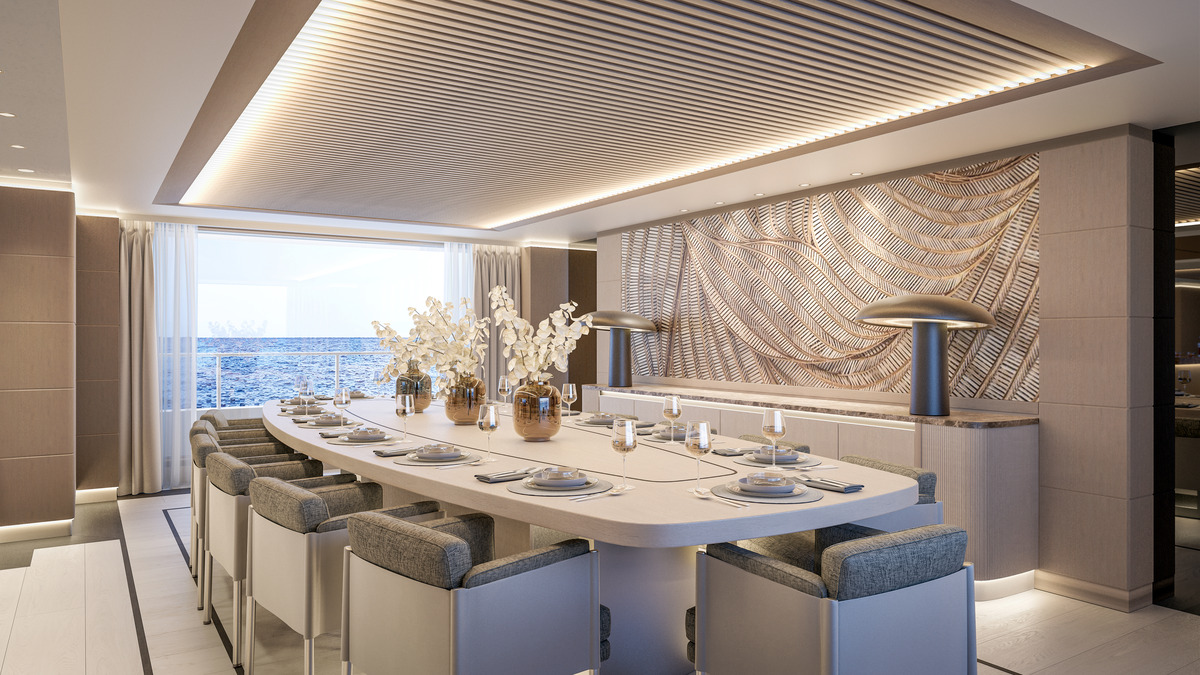
There are many such instances, which is why Nuvolari Lenard requests data and information from its suppliers regarding the source of materials and the methods utilized in their production to choose those that are more environmentally sustainable. “We are eager to educate shipowners about how the use of specific materials and construction techniques significantly impacts interior design,” Nuvolari continues, “and the fact that well-being has become one of their main expectations.”
The team is expanding its environmental considerations to include the impact of volatile organic compounds (VOCs) and the release of harmful substances in interiors, which can persist long after the yacht is delivered. This is significant because these compounds can affect the quality of the air we breathe. While this topic is hotly debated in civil engineering, it has yet to be generally addressed in yachting. Nuvolari Lenard is actively discussing construction techniques and materials that can mitigate these detrimental effects with interior construction businesses.
By embracing change, Nuvolari Lenard not only advances its design approaches but also redefines the concept of design itself. “The success of interior design is no longer just stylistic but holistic, involving all aspects of the project—interior design, the relationship with exterior design, and the knowledge and correct use of appropriate and sustainable materials and techniques,” Lenard says. “This collaborative and innovative process is precisely what Nuvolari Lenard has established and applies to the realization of its interior projects. It’s how we plan to develop a new generation of iconic designs, both inside and out.”
For more luxury content like this, check out our Yatch section here!

